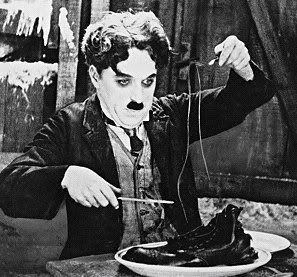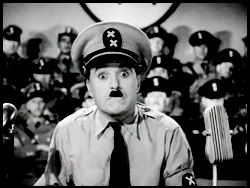
Charlie Chaplin Wallpapers
Thought of by many as the greatest comedian of all time, Charles Spencer Chaplin was born in London, England on 16 April 1889. In 1908 he joined Fred Karno's touring stage company with his brother Sydney; Stan Laurel was also a member of the same company. In 1912 the troupe went to perform in America, and Chaplin decided to stay. The following year, producer Mack Sennett saw him perform and decided to take him on at the Keystone Studio, which already boasted such names as 'Roscoe 'Fatty' Arbuckle' , Mabel Normand, the Keystone Kops and Mack Swain. However, Chaplin moved on to become an even a bigger star than any of the above legendary names, making a staggering 35 pictures in one year alone.

His first movie was Making a Living (1914); however, his next film, Kid Auto Races at Venice (1914), was destined to change his entire career. This picture saw him wearing baggy pants borrowed from 'Roscoe 'Fatty' Arbuckle', size 14 shoes belonging to Ford Sterling (and worn upside down to keep them from falling off), a tiny jacket from Keystone Kop Charles Avery, a bowler hat belonging to Arbuckle's father-in-law and Mack Swain's mustache trimmed down to toothbrush size.

From 1915 onwards Chaplin wrote, directed, produced, scored and, of course, starred in all his movies. He joined the Essanay Company the following year and in 1917, The Immigrant (1917) and Easy Street (1917) were both released. In 1918 he and his brother opened their own studio in Los Angeles, and in 1919 he teamed up with Douglas Fairbanks, Mary Pickford and D.W. Griffith to form a joint venture they named United Artists, for production of their own films. However, Chaplin did not make a film for the company until 1923 when A Woman of Paris: A Drama of Fate (1923) was released; this was followed in 1925 by the classic The Gold Rush (1925) and in 1927 by The Circus (1928), for which he received an Academy Award.

For the premiere of City Lights (1931), Chaplin traveled to London, and stayed there until 1932 before returning to the U.S. His next film was Modern Times (1936), which proved to be one of his greatest successes, followed four years later by The Great Dictator (1940), which was an indictment of the Nazi regime. Chaplin played a dual role, as a Jewish barber who fought in World War I and as the evil Adenoid Hynkel, dictator of Tomania. In 1945 he started working on a new picture, Monsieur Verdoux (1947), which was based on an idea from Orson Welles; he is thus credited in the film. In 1952 he released what is probably his best-known "talkie", Limelight (1952), which also featured his longtime friend, Buster Keaton

That same year he was found himself swept up in the anti-Communist hysteria known as the McCarthy Era that was engulfing the U.S., and found himself accused by U.S. authorities of having Communist tendencies. Outraged and depressed, he left the U.S. for Switzerland. During his absence from the States he made two more films, A King in New York (1957), released in America 20 years later, and his final film A Countess from Hong Kong (1967), which starred Marlon Brando and Sophia Loren. This last film proved to be Chaplin's only failure and was a box-office flop.
In 1969 Chaplin began new scores for a number of his films, including The Kid and The Circus (1928). He also planned to make a film called "The Freak" with his daughter Victoria Chaplin in the lead role, wearing the wings her father had worn 50 years earlier in The Kid. However, by this time Chaplin was already into his 80s, and he retired to live in Vevey, Switzerland.

n 1975 he was knighted by the Queen of England. He died in his sleep on Christmas Day, 1977.








No comments:
Post a Comment
Dear Visitor,
Please feel free to give your comment. Which picture is the best?
Thanks for your comment.